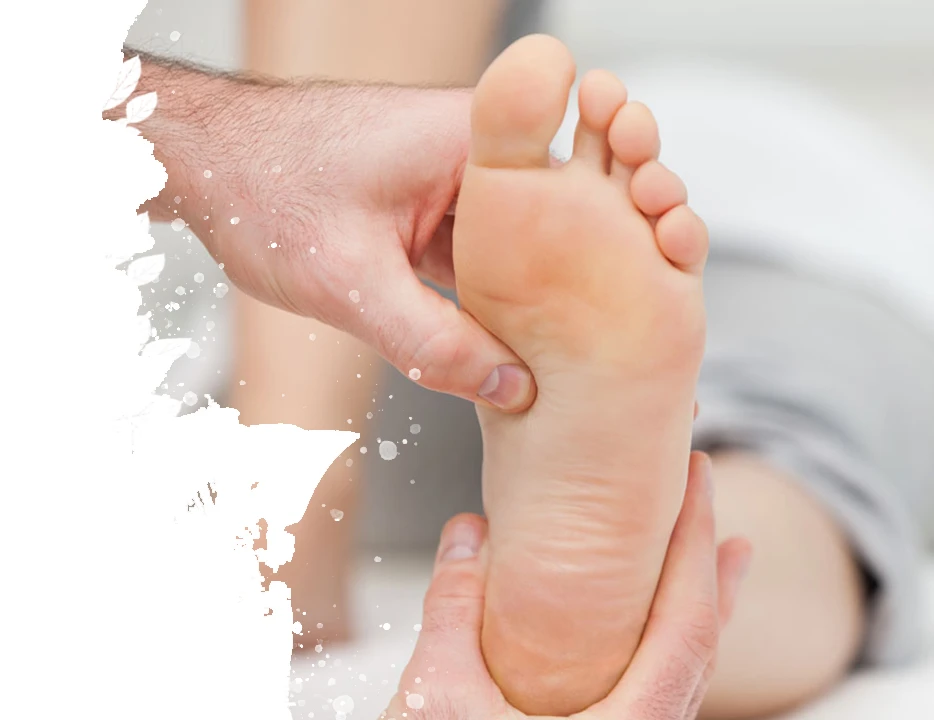Find relief and get back to living
At Jakupi Podiatry, we specialize in the diagnosis and treatment of ankle pain. The ankle joint plays a crucial role in supporting the weight of the body and facilitating movement, making it susceptible to injury and discomfort.
Whether you’re experiencing acute ankle pain from a recent injury or chronic pain due to an underlying condition, our experienced podiatrists are here to help you find relief and get back to living an active, pain-free life.
Common Causes of Ankle Pain
Ankle pain can be caused by a variety of factors, including:
- Sprains and strains: Ankle sprains occur when the ligaments supporting the ankle joint are stretched or torn, often due to sudden twisting or rolling of the ankle. Ankle strains involve damage to the muscles or tendons surrounding the ankle joint, resulting in pain and swelling.
- Arthritis: Osteoarthritis, rheumatoid arthritis, and other forms of arthritis can cause inflammation and degeneration of the ankle joint, leading to pain, stiffness, and decreased range of motion.
- Tendonitis: Inflammation of the tendons surrounding the ankle joint, such as the Achilles tendon or peroneal tendons, can cause pain and discomfort, especially with movement.
- Fractures: Fractures or breaks in the bones of the ankle, such as the tibia, fibula, or talus, can cause severe pain, swelling, and difficulty bearing weight on the affected foot.
Our Approach to Ankle Pain
At Jakupi Podiatry, we offer a variety of treatment options to help you find relief from ankle pain and get back to your normal activities.
At Jakupi Podiatry, we take a personalized approach to treating ankle pain, focusing on identifying the underlying cause of your symptoms and developing a customized treatment plan to address your specific needs and goals. Our experienced podiatrists will work closely with you to explore conservative treatment options first, reserving surgical intervention for cases where other treatments have been unsuccessful.
With our expertise, dedication, and commitment to excellence, Jakupi Podiatry is your trusted partner in achieving relief from ankle pain. Our team of skilled podiatrists is experienced in diagnosing and treating a wide range of ankle conditions and is dedicated to providing compassionate care and effective treatment options to help you get back to living a pain-free, active life.
BOOK ONLINE NOWTreatment Options for Ankle Pain
Rest, ice, compression, and elevation (RICE): Resting the affected ankle, applying ice packs, wearing compression bandages, and elevating the foot can help reduce inflammation and alleviate pain.
Immobilization: In cases of severe ankle sprains or fractures, immobilization with a cast, splint, or brace may be necessary to promote healing and prevent further injury.
Physical therapy: We may recommend specific exercises and stretches to improve strength, flexibility, and range of motion in the ankle joint and surrounding muscles.
Custom orthotics: We design and prescribe custom orthotic devices to provide support, stability, and alignment for your feet, reducing strain on the ankle joint and promoting healing.
Corticosteroid injections: In some cases, we may recommend corticosteroid injections to reduce inflammation and alleviate pain in the affected area.
Surgical intervention: If conservative treatments are not effective, we may consider surgical options, such as ankle arthroscopy, ligament repair, or joint replacement, to address the underlying cause of your ankle pain.
Contact us
More Questions?
Schedule a consultation with Jakupi Podiatry today and take the first step towards relieving your ankle pain and restoring your mobility.



